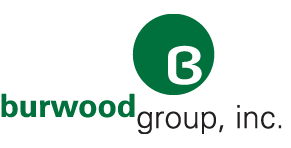Assessing Your Contact Center Maturity
The contact center is a critical yet often overlooked component of a healthcare organization’s “front door” to patients and family decision-makers. Contact center experiences can range from the positive, with quick and easy resolution, to the negative, resulting in frustration and ultimately in “network leakage.” More than 60% of customers are extremely willing or very willing to switch brands to have a better Customer Experience (CX). The Customer Experience is critical to retaining and driving business, and the mandate to improve is constant.
Knowing how to optimize investment requires an understanding of the level of maturity of the contact center’s services, capabilities, and organizational business goals. A Customer Experience maturity model helps brands understand their current maturity level, set a vision for their ideal future state, and create a roadmap to get there. It’s important to continuously re-evaluate the state of the Customer Experience because there is always room to improve as consumer expectations rise.
The Four Contact Center Maturity Stages
Below are a series of “maturity stages” based on the capabilities of the contact center. Although each organization will evolve its technology investment differently, a high-level understanding of the “art of the possible” can guide technology roadmaps.
Stage 1: Call Center
Many operations begin as call centers using phone-based technology to perform a range of basic services.
Call Center Capabilities
Appointment scheduling
Billing and inquiries
Physician referrals
Insurance authorization
Example technologies include phone systems with automated call distribution, as well as quality control and forecasting available through reports on core variables such as call volume and call handle times. Organizations in this stage need to ensure that calls are being responded to in a timely manner and routed effectively. Call experiences should contribute to improved customer experience.
Stage 2: Contact Center - Multiple Communication Channels
Many health systems are expanding services based on needs driven by M&A activity, as well as demand from medical groups. To offer more operational efficiency, basic phone-based call centers are growing into centralized contact centers.
Expanding into additional channels such as self-service, text, email, chat, and webchat, can meet the needs of current, highly motivated, high-utilization patients, as well as the emerging generation of patients who expect to interact with their healthcare organization as they do with retail and hospitality businesses.
Additional Capabilities
Increased options for self-service
Outbound text reminders for appointments and medication refills
Nurse triage or ask-a-nurse chat support
Callback to minimize queue wait
Example technologies include touch tone IVR (Interactive Voice Response), text and email outbound communications, as well as quality monitoring and call recording. Organizations at this stage of maturity focus on maintaining customer intimacy while transitioning service requests from the medical group level to consolidated centers.
Stage 3: Omnichannel Contact Center with Integrated Channels and Reporting
An “omnichannel” approach is much more than simply offering customers new ways to communicate. These communications need to be integrated for customer satisfaction and agent productivity. For example, when contact is initiated on a health system’s website, customers should be offered the option of a phone call with a transfer of information already captured to the agent. The contact may result in a post-call email to follow-up with additional information. The communication across these channels should be seamlessly transitioned from the customer’s point of view
Additional Capabilities
Contacts seamlessly transition across channels (i.e. chat to voice)
Patients communicate according to their preferred channel
Reporting can be integrated across channels
Alerts and notifications through patient-preferred channel
Example technologies include web interface, chat, chatbots, social media; intelligent contact routing across channels; consistent data context across channels; workforce management tools for scheduling and forecasting; knowledge support and scripts for the agents; conversational IVR. Organizations at this stage of maturity place additional focus on ensuring seamless customer experience across communications channels. Here, the contact center offers a multi-pronged digital front door to enable access to services via preferred ways of communicating.
Stage 4: Patient Engagement Center - Clinical, Strategic, and Connected
As healthcare organizations transition to value-based care, contact centers must play a critical role in supporting broader enterprise initiatives. These include population health and care coordination; marketing initiatives such as patient acquisition and retention; Revenue Cycle Management including proactive collection of patient out-of-pocket cost; telehealth and virtual visits.
Additional Capabilities
Proactive care coordination: Act on identified care gaps
Visibility into the patient journey
Promote relevant services
Steer patient to “best” provider
Support at-home medical device monitoring and consumer telehealth
Prospecting and retention marketing campaigns
Predictive staff scheduling
Example technologies include: integration with CRM or other patient relationship management systems, agent single view of the patient based on multiple systems, and data from the contact center can be made available to broader patient experience measurement systems.
Although very few organizations have fully realized the potential outlined for a “patient engagement center” understanding this vision is critical when planning for contact center technology. In addition, there should be a focus on establishing meaningful cross-functional team collaboration strategies with CX leaders and stakeholders across the entire organization that impact contact center operations and drive organizational goals for the Customer Experience innovation.
Keep Reading: Interested in learning more? Check out our Guiding Principles for Leveraging the Healthcare Contact Center.
Our Expertise: See how Burwood helps healthcare organizations manage technology.
Ready to Elevate Your Contact Center?
Let our experts create a roadmap to increase ROI and customer experience.





